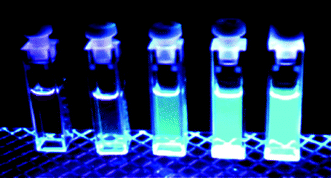Luminescent chemosensors: from molecules to nanoparticles
Abstract
The need to develop sensors for different target analytes is well-recognised and confirmed by the considerable research efforts spent for the preparation of more and more efficient sensory devices. In our laboratories we have been working on this subject for the past few years and in this contribution some selected examples of the systems we have studied will be presented. Through the discussed compounds, the reader will be able to follow our step-by-step approach towards this fascinating research field. The first essential move for a fruitful strategy in the development of efficient macroscopic sensory devices is a thorough understanding of the systems responsible for the binding event and of its consequent transduction into a detectable signal. These species are often molecular or supramolecular structures that behave as molecular-level sensory devices, which are usually referred to as chemosensors. Among them, fluorescence-based chemosensors present many interesting features, such as high sensitivity and versatility. Starting from this first and fundamental step our aims and future perspectives will be presented. There is still a great demand for ever more efficient chemosensors; nanostructured systems such as


 Please wait while we load your content...
Please wait while we load your content...